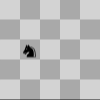Oops, turns out I haven’t had a post in a good long while. Before it gets even longer, I figure that I should take one off my backlog and just write it up, even if it is a little on the shorter side.
Today’s post was inspired by this post on /r/dailyprogrammer a month ago today: Challenge #178 [Hard] Regular Expression Fractals. The basic idea is that you are going to take a rectangular region and divide it into four quadrants, again and again, recording the path as you go (images from that post):







